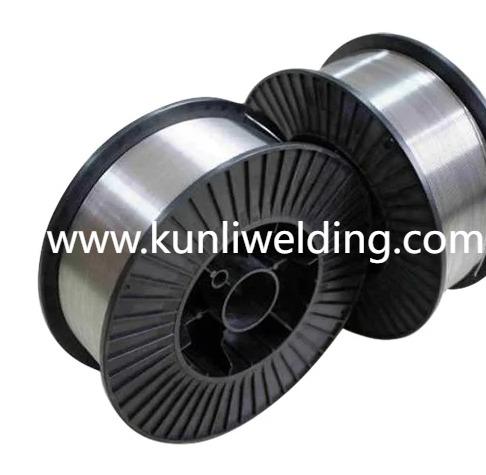Kunliwelding How Does ER5087 Balance Strength With Weldability On The Shop Floor

Modern makers of lightweight structures are rethinking material choices as durability and weight both matter, and Aluminum Welding Wire ER5087 often surfaces in technical conversations for joins where strength and corrosion resistance are required. This filler is commonly used in marine grade and heavy duty settings because its alloy balance helps form weld deposits that resist aggressive atmospheres while offering mechanical performance that suits structural parts.
One practical reason teams consider ER5087 is its deposit behavior under welding. The filler contains magnesium which contributes to weld metal toughness and helps the joint hold up under cyclic loads. That property matters for hull fittings, deck brackets and other marine details that must tolerate vibration and repeated stress without early cracking. Specifying a filler whose deposit retains ductility under load reduces the risk that small service cracks will grow into failures that need costly intervention.
Corrosion resistance is another factor that shapes the choice. In salt exposed environments welds can become initiation sites for localized corrosion if the deposit chemistry and finishing plan are not aligned. This alloy tends to form a protective surface when handled and finished correctly, which combines well with common coating and sealing practices. When designers coordinate filler choice with a finishing strategy, the assembly benefits from both mechanical integrity and an improved resistance to environmental attack.
Weldability and production performance also influence decisions on the shop floor. A wire that gives a stable arc and predictable puddle reduces setup time for both manual and automated stations. That means fewer parameter tweaks when moving between trial welds and volume runs, less chance of feed related interruptions, and more consistent bead geometry across shifts. For manufacturers under pressure to meet tighter delivery windows, that steadiness can translate into fewer stoppages and more reliable inspection outcomes.
Thermal management during joining affects dimensional control and distortion. When a filler supports controlled heat input and clean layering, large panels and thin sections are less likely to warp out of tolerance. Good joint sequencing and consistent fixturing amplify the filler's thermal advantages and reduce the need for corrective shaping after welding. For retrofit and repair tasks where fit up is constrained, that control preserves alignment and reduces rework time. Practical trials on representative parts reveal the best parameter window for each shop's equipment and parts.
Field repairs and logistics are part of the real world picture. Wire that ships in protective spool formats and that is supported by clear handling guidance is easier to use in mobile workshops and on vessels. Sealed packaging and short feeder runs limit moisture pickup and cut the risk of porosity when welding in damp conditions. Simple habits such as a trial bead after spool change and keeping consumables in dry conditions make the difference between a one stop repair and repeated visits.
Finish compatibility matters for appearance and long term protection. When a filler wets and blends predictably with the parent metal, finishing time is reduced and coatings adhere more uniformly. That lowers labor on visible components and shortens the time from welding to final assembly. In sectors where both appearance and durable service are procurement priorities, aligning filler, welding practice and finishing plans helps teams meet inspection needs without delaying delivery.
Automation trends reinforce the value of predictable consumables. Robotic cells demand uniform diameter and surface quality to feed without interruptions. Suppliers who provide spool options and handling notes that match common feeders help integrators reduce tuning time and run longer sequences with consistent bead geometry. That operational stability matters when production ramps or when models change quickly on the line.
There are trade offs to evaluate. Some thin gauge or decorative work may benefit from other filler choices that allow slightly different finishing tones or lower heat input handling. The practical path is to run representative trials on parts and to include finishing teams in those checks so visual and mechanical goals align. Supplier technical notes and sample spools shorten the qualification cycle and reduce surprises when scaling up.
Choosing this filler for demanding builds or repairs is a systems decision. Align material selection with joint design, welding method, handling practice and finishing plan. When teams do that, welds meet structural goals and inspection expectations while keeping fabrication efficient. For technical details, handling recommendations and product forms relevant to marine and heavy duty applications consult the manufacturer news and product information available at www.kunliwelding.com which provide product context and handling notes to support specification and shop adoption.


